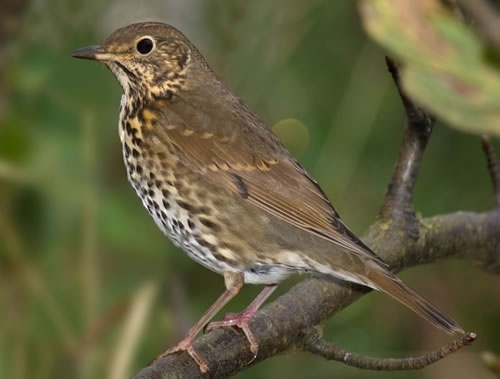Turdus philomelos

Habitat
The song thrush is found in areas of woodland, trees, bushes and scrub, adjacent to grassland. They prefer areas where there is leaf litter and moist ground with large numbers of invertebrates. In arable areas, song thrushes prefer game crops and oilseed rape, as where these crops are ground tend to have damp conditions and therefore plenty of insects.
Food
Adults eat a wide range of invertebrates, especially snails and earthworms, along with berries. Their chicks have a similar diet but eat many insect larvae before fledging.
Nesting
Song Thrushes breed in between mid-March to the end of August. Nests are made in trees, shrubs, climbing vegetation and occasionally on the ground. They will have up to three broods in a good season when the weather stays warm and dry and food sources aren’t limited. They can lay up to 3 to 5 eggs per clutch.
Song/Call
Strongly varied song, sounds ‘dogmatic’, often very squeaky and shrill, with cascading notes and repetitions.
Beneficial Management
- Aim to cut hedges on rotation to boost berry production and protect nest sites from hedge production.
- Establish areas of wild bird crops, kale is particularly favoured for foraging.
- Aim to create extended filed margins in arable and grassland fields to increase feeding opportunities. Try to leave damp areas in field corners to maintain insect populations.
- Song thrushes are vulnerable to molluscicides, a consultation with your agronomist is advised for best practice for slug control to prevent poisoning.
Download and print
Download as PDF to print >
Get the Latest News & Advice
Join over 100,000 subscribers and stay updated on our latest advice, research, news and offers.
*You may change your mind any time. For more information, see our Privacy Policy.